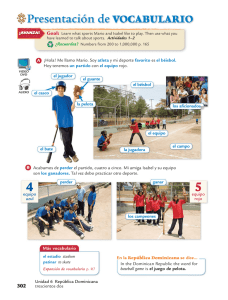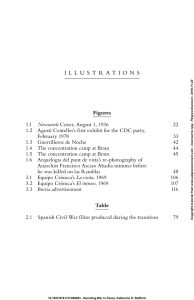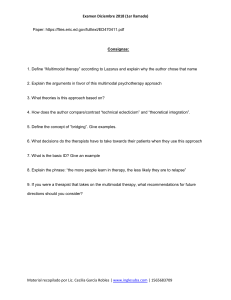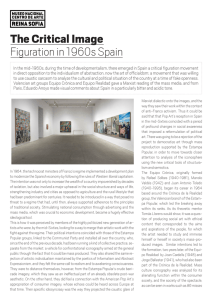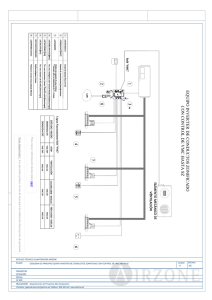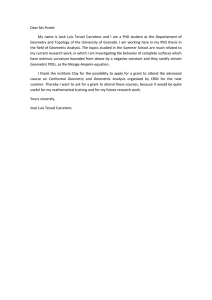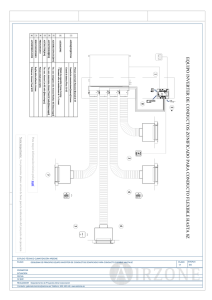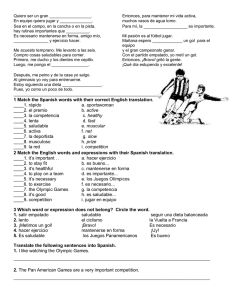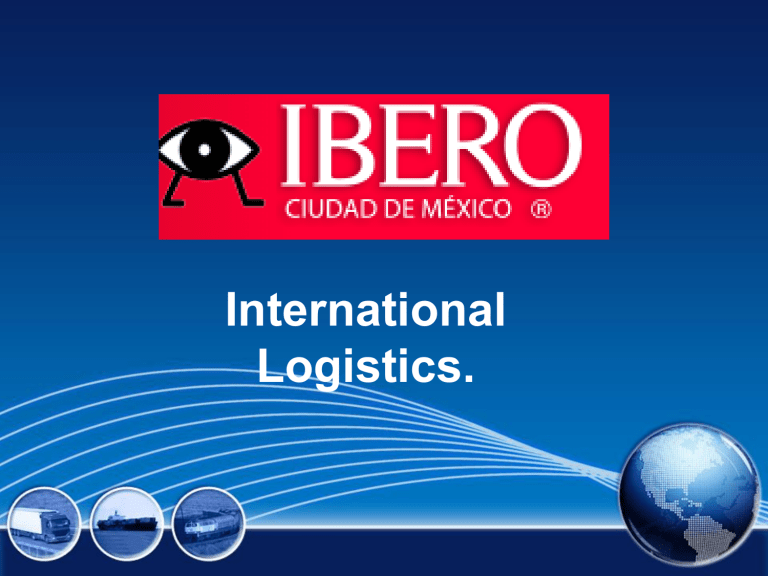
International Logistics. Module 3. International Transport Systems. Difference between means and mode of transport. Types of cargo. Tipos de Carga. 1. General or dry cargo: it is the one that is present in solid, liquid or gaseous state, and that is properly packed or un packed at all, can be treated as a single unit. Dry cargo is transported in packages/bulks which shape, weight and dimensions conform to the characteristics of such, and its handling is carried out with basic equipment. Split or loose general cargo: It is the load that is handled in sacks, boxes, lumps, bales, parts, garter machinery, etc. 2. Refrigerated (reefer) cargo or cold chain: Uses normal handling, but requires special care such as temperature control and weather conditions. 3. Hazardous cargo or HazMat: It is subject to strict national and international regulations regarding its handling, packaging, labelling, storage and transport. 4. Special cargo: It is material that by its nature, particular characteristics, dimensions or weight, requires very special equipment for its transportation. Tipos de Carga. Mexican Port System. • Mexico has more than 11.000 kilometers of coastline, and is located in an excellent position in the Pacific and Atlantic Ocean which makes it a highly competitive country in the maritime sector. • Seaports carry out different types of operations: – – – – – Boarding, landing and transfer of passengers and crew. Shipment, disembarkation and transfer of cargo to and from a ship. Storage and warehousing of goods on land and stowage to and from ships. Provide internal access and intermodal connectivity. Complementary services to maritime carriers. Mexican port system. • The main functions of seaports are: – Guarantee the safety for the ships during the arrival, during the operation and when leaving the port. – Provide the necessary facilities and equipment for ships in the anchorage, arrival, loading and unloading, as well as embarking and disembarking passengers. – Provide transportation of goods, loading and unloading, warehousing and shipservicing at port. – Provide shelter, repair, maintenance of the necessary services to ships and other ships in emergency cases. • Provide other services to ships, people and cargo. – Container ports. Container port operations include four steps: • • • • Ship-to-dock: stage when load is discharged Transfer: Load is discharged to a temporary area Storage — the stage in which the containers are maintained for a longer period of time. Delivery and Receiving: It is the delivery movement (liberalization) of the freight. Or the reception at the terminal. Type of ports. • International (deep water) ports This category is assigned to sea port which is in a position to receive large-draught vessels, i.e. of large quantities of cargo, is characterized by shipping and receiving international vessels. In Mexico these ports are administered by private own companies. API, SSA-CARRIX, Contecon, Hutchinson Ports ICAVE-LCT-TIMSA-TILH-EIT, etc. • Cabotage ports In naval terms cabotage is the transport of cargo and passengers between ports of the same country, sailing relatively close to the coast • Dry port It is an intermodal terminal of goods located inside a country or economic region that connects, through the rail network or highway, with the seaport of origin or destination of the treated traffics. Intermodality is one of the characteristics of a dry port. It means combining different modes or modalities of forms of transport, in order to make the transport of goods more agile, flexible, reliable and efficient Sea Transport logistics. • Positive feutures. • • Negative features. Characteristics of maritime transport. • All kinds of products: from a box to turnkey projects. • All types of packaging: Unified, Loose, Containerized, non-containerized, duly protected for sea crossing. • Rate: broken down or all inclusive. General or seasonal. Additional charges apply. • Chargeable Base: Per Container – Ton/M3. • Service: FCL or LCL, trap or conference, specialized, through shipping lines, agents or NVOCC. • Logistic process: Determination of ports, itineraries, frequencies and voyages, request of booking, date of cut off of documentation, positioning programming, export clearance, loading-loading-transfering handlings, departures, emission of BL, arrival and revalidation of BL, return of empty container and cut off of demurrages. Transit time. Tiempos de transito y su impacto en costos y operaciones. • Maritime Transport. 15 to 21 days on transatlantic FCL and LCL travel. 5 to 15 days Central and South America. Consider 7 to 10 days for positioning and export sailing. Maximum 7 days for import clearance. It generates storage charges if it exceeds that period, in addition to demurrages, detentions or false freight charges. Contract / Ocean Bill of Lading. Tipos de Carga. Equipo de Transportación Marítimo. CONTAINER SHIP BULKER REEFER BULKER TANKER GRAIN BULKER RO-RO LNG Tipos de Contenedores. HIGH CUBE Top Ten Shipping Linersp Top Ten Ocean Forwarders NVOCC Tipos de Carga. Mexican Airport System. • Airports are an important asset of the national logistic infrastructure, which makes it possible to trade by air cargo, which, while representing the most expensive means, also offers very high levels of service for transportation times Associated. • An airport is defined as a civil public service aerodrome that has the appropriate facilities and services for the reception and dispatch of aircraft, passengers, cargo and mail of the regular and non-regular air transport service, as well as the transport Private commercial and non-commercial. • All foreign trade goods entering the airport facilities are protected in warehouses and transfer areas, including within the supervised enclosures authorized by the internal Customs office and are subject to the recognition Customs for its dispatch, both in import and export. It is usual that the offices of the customs brokers and the cargo agents, as well as those of services related to the dispatch of the goods, are located within the aforementioned supervised precincts. Mexican Airport System. • The Mexican airport system consists of 85 airports and 1.385 civil aerodromes. From 1998, 34 were concessioned from the main Mexican airports to private groups, with the system of 85 installations being integrated, as follows: – – – – – • 12 assigned to the Pacific Airport Group (GAP). 13 to the North Central Airport Group (OMA) and 9 to the southeast Airport Group (ASUR). 24 are administered by ASA and, 27 in charge of the secretariats of national and marine defense, as well as of various state and municipal governments. The most important airports of the system are: – – – – – – AI CdMx Benito Juárez. + 400,000 tons of cargo per year. Miguel Hidalgo Gdl. + 130,000 tons of cargo per year. AI Mty Mariano Escobedo + 49000 tons of cargo per year. AI Cancun + 25000 tons of cargo per year. AI Tij Abelardo L. Rodríguez + 15000 tons of cargo per year. Sistema aeroportuario mexicano. Air transport logistics. • Positive features. • • Negative features. Air transport features. Características Transporte Aéreo. • Products: urgent, perishable, high value, not bulky and light. Medicines, jewellery, autoparts, airparts, flowers, fashion accessories, printed, electronic, gadgets, messaging, etc. • Packing: Duly palletized or otherwise bundled and packaged for air transport. • Rates: Airport – airport, per kil0gram, rate by ranks or flat rate. Additional to charges apply. • Chargeable Base. Gross weight or volumetric weight. • Service through airlines, cargo agents or forwarders with IATA registration. • Logistic process: Determination of the airport of loading and unloading, availability of flights and routes, closing of booking, closing of documentation of load, issuance of air waybill and release. Transit time. Tiempos de transito y su impacto en costos y operaciones. • Air transport. 1 day on direct flights. 2-3 days on flights with transshipments. Consider 2 to 3 days for pickup and export clearance. Maximum 2 days for import clearance. It generates storage if it exceeds that period. Contract / Air Waybill. Tipos de Carga. Características delcommercial Transporte airplanes. Marítimo. Mixed Características del Transporte Terrestre. • • • • • Airbus 319, Airbus 320 y Airbus 321 Airbus 330 y Airbus 340 Boeing 737 Boeing 777-200 Boeing 747 Cargo airplanes. Características del Transporte Marítimo. Características del Transporte Terrestre. • Boeing 747- 400 ERF • Boeing 747 F Freighter Características del Transporte Marítimo. Super Cargo aircraft. Características del Transporte Terrestre. • Airbus 300-600 ST • Antonov 225 Mriya C Airfreight Containers. Tipos de Carga. Mexican Highway System. • In Mexico, as in many other countries, the road network is the most widely used transport infrastructure, given the flexibility it confers on cargo movers as well as its large extension, allowing door-to-door delivery services. • The 370,000 kilometers of intercity roads available to Mexico are integrated by highways, roads, roads and gaps that allow connectivity between virtually all the populations of the country, irrespective of the number of inhabitants with whom Count and its economic relevance. • On the other hand, within the federal network of 50000 km and responding to the density of the traffic of goods and passengers that annually register, as well as the importance of metropolitan areas, production nodes, logistics activities and consumption They link, have identified 14 main road runners, which together total nearly 20000 kilometers along various longitudinal axes north-south and transverse east-west. Mexican Highway System. • • The 14 backbone axes are: 1. 2. 3. 4. 5. 6. 7. 8. 9. 10. 11. 12. 13. 14. México-Guadalajara-Hermosillo-Nogales, con ramal a Tijuana México-San Luis Potosí-Nuevo Laredo, con ramal a Piedras Negras Querétaro-Aguascalientes-Zacatecas-Cd. Juárez Acapulco-México Puebla-Progreso Mazatlán-Durango-Saltillo-Monterrey-Matamoros Manzanillo-Guadalajara-San Luis Potosí-Tampico, con ramal a Lázaro Cárdenas Acapulco-Puebla-Veracruz Veracruz-Monterrey, con ramal a Matamoros Transpeninsular de Baja California Corredor del Altiplano Puebla-Cd. Hidalgo Circuito Transístmico Circuito Turístico de la Península de Yucatán Sistema aeroportuario mexicano. Mexican rail system. • The railway infrastructure represents one of the most important logistical assets, because it is the main element within the logistic network that facilitates the so-called intermodal transport, where several modes of transport combine their advantages To achieve greater efficiency. • The Mexican rail system is composed of 26727 km of railways, of which 20722 km are trunk and branch, and 6005 are secondary, of which 4450 km are auxiliary roads (patios and siding) and 1500 km are owned by individuals , connected to the different trunk tracks. • Currently they are concession to private consortiums for operation 17799 km in 3 main and 3 short lines, as well as the railway Terminal of the Valley of Mexico, to a mixed capital company, where the federal government participates with 25% of actions. For its part, the 222 km of the isthmus of Tehuantepec line are administered by the federal government. Mexican railroad system. • The main sistems are called: – Northeast Railway, assigned to the North American company Kansas City Southern de México, with 4283 km; – North Pacific Railway, concession to the Ferromex company with 8439 km, and the – Southeastern Railway with 1954 km to the company Ferrosur. • Short lines include – Coahuila-Durango railway with 974 km; – Ferrocarril Chiapas-Mayab with 1558 km – The path that runs from Salina Cruz, Oax. Coatzacoalcos , Ver., with 222 km, and which is the only one operated by a public organism called the Isthmus of Tehuantepec Railway. inland transport logistics. Pros y Contras Transporte Terrestre. • Advantages. • Disadvantages. Características del Transporte Characteristics of land Marítimo. transport. Características del Transporte Terrestre. • All kinds of products: • Truck: Just one box to oversized goods. • Railway: High volume Products: automotive, minerals, agricultural, fuels, general merchandise. • All types of packaging: Unified, break bulk, unpacked, packed, but properly protected and stacked inside the cargo unit. • Rate: – – – Trucking: If LTL by weight-distance (product class NMFA may apply). If FTL, per unit type and size. Tariff per mile in the USA and Canada. Railway. By product type. Fixed fee per tonnage + distance factor per tonnage. Surcharges apply. • Charging Base: Weight-volume, unit of charge, distance. • Service: FTL, LTL, dedicated, specialized. Urgent. • Logistic process: request of positioning or pick-up, arrival Border, transfer, dispatch to destination, cut of detentions if any. Transit time. Tiempos de transito y su impacto en costos y operaciones. • Road transport. • 24 to 48 hours arrival at the border. Mexican portion. • 2 to 7 days transit to Canada. • 6 to 10 days of transit arriving in Central America (GuatemalaPanama) • Consider 1 to 2 days for border crossing. • Consider time or days free of stays. • You can generate penalties if you exceed that term or false freight. • Rail transport. • • • • • • Transit time Ramp – consistent ramp, for example: Mexico-Nuevo Laredo 2 days. Chicago-Mexico-12 days Toronto-Mexico-16 days Mexicali – Bajio/Mexico-5 days Veracruz-Mexico-1 day Contract / Truck bill of Lading. Contract / Railroad Bill of Lading. Tipos de Carga. Equipo de Transportación Carretero. Equipo de Transportación Carretero. Equipo de Transportación Carretero. Equipo de Transportación Carretero. • Tractor: Motor vehicle designed to haul trailers and – Articulated: Tractor + trailer, coupled by articulation mechanisms. – Double articulated: Tractor + semitrailer + trailer, coupled by means of articulation mechanisms the environment, but does not need temperature control. • Trailer: vehicle without front axle, intended to be coupled to a tractor so that it is pulled and part of its weight is supported by it. • 53 ' Dry cargo box: Used for all kinds of cargo, protects against the environment, but does not need temperature control. • External measures: Equipo de Transportación Carretero. – – – • Largo 15.90 m, Width 2.55 m, Alto 2.85 m. Internal measures: – – – – Largo 15.75 m, Width 2.48 m, Alto 2.68 M. Maximum load Capacity: 35 ton/104.68 m3 Equipo de Transportación Carretero. • 48 ' Dry cargo box: Used for all kinds of cargo, protects against the environment, but does not need temperature control. • External measures: – – – • Largo 14.400 m, Width 2.55 m, Alto 2.85 m. Internal measures: – – – – Largo 14.25 M, Width 2.48 m, Alto 2.68 M. Maximum load Capacity: 35 ton/104.68 m3 • 40 ' refrigerated box: Used for all kinds of load requiring stable temperature control. • External measures: Equipo de Transportación Carretero. – – – • Length 12 m, Width 2.4 m, High 2.52 m. Internal measures: – – – – 11.53m, Width 2.35 m, Alto: 2.47 m. Maximum load capacity: 30 ton, 66.90 m3 Equipo de Transportación Carretero. Equipo de Transportación Carretero. Equipo de Transportación Carretero. Equipo de Transportación Carretero. Equipo de Transportación Carretero. Equipo de Transportación Carretero. Equipo de Transportación Carretero. Equipo de Transportación Carretero. Tipos de Carga. • Train: It is called Railway train to a series of wagons or connected cars, which usually circulate on permanent rail rails for the transport of goods or passengers from one place to another. • There are several types of wagons: Equipo de Transportación FFCC. – – – – – • Railcars. Gondols Hoppers. Platforms. Intermodal. Railcar of 50 ': The vans are used to transport products that require protection against the weather. Some variations include dampers for transporting fragile cargo such as works of art, electronic components, or goods sensitive to vibration and abrupt movements. – – – – Length 50 ' 6 "; Length with couplings 58 ' 5 1/2 " Height 17 ' 0 "cubic capacity 6.197 cu. Ft. Net weight no load 75.000 lbs. • Equipo de Transportación FFCC. Furgón de 60’ High Cube: Pueden ser utilizados para el transporte de productos ligeros, pero muy voluminosos como: envases, plásticos, electrodomésticos, papel, etc., así como de alimentos y bebidas como: azúcar, refrescos, enlatados, etc. – – – – – Longitud 60' 9 3/4" Longitud con coples 66' 1 1/2 " Altura17' 0 7/8“ Capacidad cúbica 7,598 cu. ft. Peso neto sin carga 87,200 lbs. • 60 ' refrigerated railcar: There are variations of these cars of 60 ' with climate control for Equipo goods that require such as fruits, fresh flowers, frozen meat, dairy products and live animals. – – – – – Length 60 ' 9 3/4 ' Length with couplings 66 ' 1 1/2 " Altura17' 0 7/8“ Cubic capacity 7.598 cu. Ft. Net weight no load 88.500 lbs.. de Transportación FFCC. • Multi-purpose Gondol: Carriage with open lid, but Equipo de Transportación with closed walls, for lumps or other goods that can slip, carry all kinds of material that does not need protection against the environment. These carts are designed to facilitate loading and unloading by means of car tipping cranes or magneto. – – – – – Length 68 ' 4 " Length with couplings 72 ' 11 1/2 " Height 12 ' 6 3/8 " Capacity at side walls level 3.366 cu. Ft. Net weight no load 77.900 lbs. FFCC. • Mineral Bulk Hopper: For seeds hoppers are used for the transport of industrial products that do not require protection against the environment, such as coal. It has floodgates at the bottom that makes it easy to unload bulk products. Among other metals that are transported include products such as sheets, planchón, wire rods, cable, ingots and billets and the waste of iron; Joists, scrap metal, steel rolls; Aluminium rolls and sheets, as well as copper rods and cathodes. Equipo de Transportación FFCC. – – – – – Length 68 ' 4 "Length with couplings 72 ' 11 1/2" Altura9' 0 7/16" Wall-level capacity Laterales3,242 cu. Ft. Net weight no load 72.000 lbs. • Cement Hopper: The traditional movements ofde Transportación Equipo concrete are in bulk, by means of cement hoppers and van for the movement of cement in sacks. This type of hoppers are used to transport products that require protection against the environment. They have lower floodgates for the discharge of the product. – – – – – Length 39 ' 3 1/2 ' Length with couplings 41 ' 11 " Height 15 ' 1 " Capacity at side walls level 3.000 cu. Ft. Net weight no load 56.000 lb FFCC. • Tanker: Tanks have hermetic seal to avoid de leakage or possible contamination,Equipo and are used for the transport of liquid or gaseous products such as wine, juices, hydrogen or liquid oxygen and some petroleum derivatives as Combustoil, petrol, diesel, lubricating oil, gas L. P., propane gas, etc.). – – – – – Length 40 ' 5 1/4 " Length with couplings 43 ' 9 " Altura15' 15/16" Cubic capacity 17.574 Gals. No-load net weight 82.000 lbs Transportación FFCC. • Automotive Trilevel-Autorack: These cars Equipo de Transportación FFCC. are used to transport new cars, there are variations of open and closed, to guarantee the integrity of the product. – Length with couplings 145 ' 4 " – Width 10 ' 8 "Height 20 ' 2" – Maximum automotive capacity 24 units. • Semi Trailer Box – Trailer 53 ': Trailer boxes can Equipo de Transportación be moving by rail on platform cars, reducing the cost of transportation over long distances. There are also variations for ambient temperature control in goods that require it – – – – Length 53 ' Height 9 ' 6.5 " Ancho8‘ 6.375“ Load capacity 26.500 ton. FFCC. • Intermodal platform: The platforms are used for the Equipo de transport of cargo in general or heavy load that does not require protection against the environment. • They have attachments that make it possible to secure the load during transport. – – – Length per unit 58 ' 4 " Height without containers 57 " Load capacity 586.500 lbs. Net weight no load 215.500 lbs. Transportación FFCC. Intermodal connections. Transporte Multimodal. • Intermodal corridors are the land routes of a country that have outstanding characteristics for the efficiency of logistic chains. Must include mainly: – Connectivity in road and/or railway infrastructure with ports. We are talking about a modern and efficient infrastructure. – Offer of services identified clearly as high quality in the autotransport and/or railways. – Presence of dry ports or intermodal terminals that facilitate the rail-road interface. – Simplified and uniform customs processes (at least on the way). Transporte Multimodal. Intermodal connections. – In general, that the various government bodies have incorporated as public policy the promotion of these transport alternatives contributing to their optimum performance. – Presence of logistic operators capable of integrating services. We refer to the operator's ability to generate a true added value in the integration of links in the logistic chain. – Here stand out the OTM, the cargo agents and all those who are in a strategic disposition to offer these services. – Perhaps the most important components to fully understand the development of the corridors are intermodal and communication technologies, as in practical terms have made the traditional geography elastic. – Logistic platforms. Transporte Multimodal. • A logistic platform is a specialized area that has the necessary infrastructure and services to facilitate the activities related to transport packaging and distribution, for national and/or international transit of goods where different Agents coordinate their actions to benefit the competitiveness of the products that make use of the infrastructure. • The logistic platforms can be managed by a single entity, public, private or mixed. • There are three types of logistic platforms. – Unimodal Distribution Centers – Logistic zones – Multimodal platforms. Logistic platforms. Transporte Multimodal. • Unimodal distribution centers. – They are infrastructures that act as warehouse and are mainly oriented to the management of the flow of goods towards the final customer and of the associated inventory, mainly oriented to the terrestrial transport by road. • The logistic zones: – They imply a greater degree of integration of operations through activities of consolidation, localization and re-routing of inventories. These logistical infrastructures include points of concentration of traffic and of load breakdown, connecting it with other points through a different mode of transport. This type of infrastructure incorporates at least two modes of transport, so it is possible to implement here some distribution strategies and cross docking. – Typically here are classified air cargo centers or areas of port logistics activities. Transporte Multimodal. Logistic platforms. • Multimodal platforms. – They are logistical nodes that connect different modes of transport in a transparent way for the user, where the emphasis of the process is in the services of value added to the load and not in the mode of transport used. – This type of infrastructure is also known as hub-type infrastructure, usually linked to the existence of a port to take advantage of economies of scale on international routes. Multimodal. MexicanTransporte Logistics Platform System. Transporte Multimodal. Transporte Multimodal. Multimodal Transport. • It is not a means of transport itself, rather it is a technique that combines different modes of transport. • A single load unit is transferred by different modes of transport, under one document and formalizing a single transport contract, either the BL multimodal or the multimodal air waybill. • The contract is formalized with a single transport operator who assumes responsibility for the coordination of the entire chain and the claims. • Objective increased transport efficiency: reduction of time, manipulation, theft, damage and decongestion of land routes • Actors: The Multimodal transport operator is responsible for transport. • Infrastructures: cargo terminals, multimodal platforms, dry ports. Multimodal Transport Features. Mode Main Advantages Main Disadvantages • Higher efficiency (occupancy • Not suitable for certain types of index, and node cargo (bulk and special cargo). concentration). • Substantial reduction of time (operations) and costs (insurance, wages). Multimodal • Coordination and efficiency of controls (customs, sanitary). • More security. • Circulation imbalance (empty returns). • Requires greater investment in equipment and handling. • Contract / Multimodal Bill of Lading. Tipos de Carga. Modal techniques Trucking – Railway: TOFC (trailer on flat car) – trailer transported on wagon, usually reduced and provided with bags for the housing of its wheels. COFC (Container on flat car) – Trailer transported on chassis wagon or lowered wagon, especially for containers or also traditional platform wagon. 8 3 Modal techniques Truck – Maritime: RO - RO (Roll on / Roll off ), You can have three alternatives: 1. COFC wagon or trailer pulled and stowed in the warehouse of specialized Ro/RO ships by means of a terrestrial access ramp. 2. Rolling platform loaded with unification units such as containers, trailers, pallets, etc. o rolling platform loaded with units out of pattern or indivisible load, pulled and stowed in the warehouse of specialized RO/RO vessels. 3. Loading of containers in the warehouse of RO/RO specialized vessels, by means of large forklifts or piggy Packers without the use of container chassis, or rolling platform. 8 4 Modal techniques Truck – Air: Trailer or container stowed at the edge of cargo planes, jumbo type, or wide body, ready to receive ISO and TIR models (International convention for Physical and operational characteristics of road vehicles), using tiltable ramps for embarkation – Landing of trailer and elevator. 8 5 Drayage and load equipment 8 6 Drayage and load equipment 8 7 Drayage and load equipment 8 8 Drayage and load equipment EQUIPMENT SPEC SHEET 8 9 Equipo Intermodal Ferromex Contenedor 53' Longitud 53' Altura 9'/6.5" Ancho 8'/6.375" Capacidad de carga 26,500 tons. Plataforma Intermodal Maxi Stack III (Doble Estiba) Longitud de cinco unidades Longitud por unidad Altura sin contenedores 304' 11 3/4" 58' 4" 57" Capacidad de carga 586,500 lbs. Peso neto sin carga 215,500 lbs. 9 0 Thank you very much for your kind attention. MAE Arturo Pérez Santander [email protected] móvil 554253 2521

